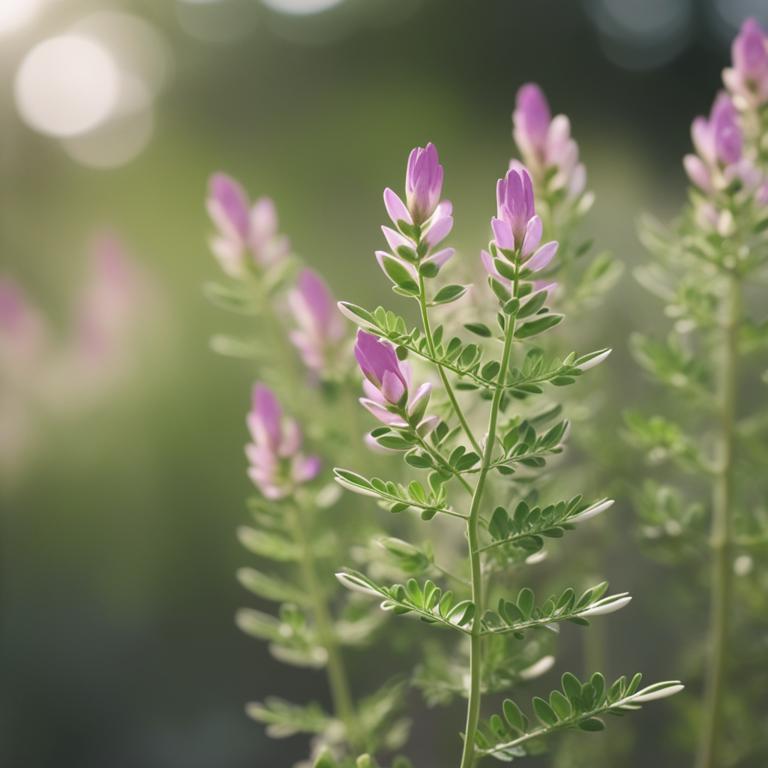11 Astragalus Membranaceus Best Medicinal Parts

1. Root
Astragalus membranaceus root, also known as Huang Qi in traditional Chinese medicine, has been used to boost the immune system and alleviate symptoms of chronic fatigue syndrome. The root contains compounds such as astragalosides, which are believed to have anti-inflammatory and antioxidant properties. Astragalus membranaceus root has also been traditionally used to enhance the body's natural defenses and support overall health.
2. Rhizome
Astragalus membranaceus rhizome, also known as Huang Qi, contains polysaccharides and flavonoids that exhibit immunomodulatory and anti-inflammatory properties. The rhizome has been traditionally used in Chinese medicine to enhance the body's resistance to disease and to promote overall health. Its bioactive compounds have been shown to modulate the immune system, making it a potential treatment for various conditions, including autoimmune diseases and viral infections.
3. Leaf
Astragalus membranaceus leaf is traditionally used in Chinese medicine to treat various conditions, including fever and rheumatism, due to its anti-inflammatory and immunomodulatory properties. The leaf is also believed to have antioxidant and antimicrobial effects, which can help protect against oxidative stress and infections. Furthermore, the leaf is thought to have a role in improving the body's immune function and enhancing its ability to fight off diseases.
4. Whole Plant
Astragalus membranaceus whole plant contains various medicinal compounds, including flavonoids, saponins, and polysaccharides. These compounds have been found to exhibit immunomodulatory, anti-inflammatory, and antioxidant properties, contributing to the plant's potential health benefits. The whole plant is used in traditional Chinese medicine to enhance the immune system and improve overall health.
5. Stem
Astragalus membranaceus stem, also known as Huang Qi stem, is used in traditional Chinese medicine to tonify the Qi and boost the immune system. The stem is believed to have anti-inflammatory properties and is often used to treat conditions such as bronchitis and coughs. It is typically harvested in the summer months and then dried for later use in herbal remedies.
6. Aerial Part
Astragalus membranaceus aerial part contains flavonoids, saponins, and polysaccharides, which are believed to have immunomodulatory and anti-inflammatory properties. The bioactive compounds in this part may also exhibit antioxidant and anti-fatigue effects, contributing to its traditional use in traditional Chinese medicine. Additionally, studies have shown that the aerial part of Astragalus membranaceus may help to improve cardiovascular health and reduce oxidative stress.
7. Flower
Astragalus membranaceus flower is not commonly cited as a medicinal part, but it may contain some bioactive compounds. However, the root of Astragalus membranaceus is more widely recognized for its medicinal properties, including anti-inflammatory and immunomodulatory effects. The root's bioactive compounds, such as polysaccharides and saponins, are thought to contribute to its medicinal benefits.
8. Young Stem
Astragalus membranaceus young stem is used in traditional Chinese medicine and contains various bioactive compounds. It is known to have immunomodulatory effects due to the presence of flavonoids, saponins, and polysaccharides. The bioactive compounds in the young stem are thought to contribute to its potential health benefits, including anti-inflammatory and antioxidant properties.
9. Fruit
Astragalus membranaceus fruit is not commonly used in traditional medicine, but its seeds are considered beneficial for various health issues. However, some studies suggest that astragalus seeds may have a role in promoting diuresis and aiding in the treatment of certain urinary problems. The seeds of Astragalus membranaceus may also have a laxative effect due to their saponin content.
10. Old Stem
Astragalus membranaceus old stem, also known as Huang Qi, is valued for its medicinal properties. The old stem of Astragalus membranaceus is rich in polysaccharides, flavonoids, and other bioactive compounds, which have been found to have anti-inflammatory and immunomodulatory effects. These compounds are thought to help boost the immune system and have potential benefits in the treatment of various diseases.
11. Seed
Astragalus membranaceus seed, particularly the embryo and endosperm, contains flavonoids and saponins that have been traditionally used in Chinese medicine to enhance immune function. The seed also contains astragaloside IV, a triterpenoid saponin with potential anti-inflammatory and immunomodulatory properties. These compounds have been studied for their potential to boost the body's natural defense mechanisms and protect against infections.